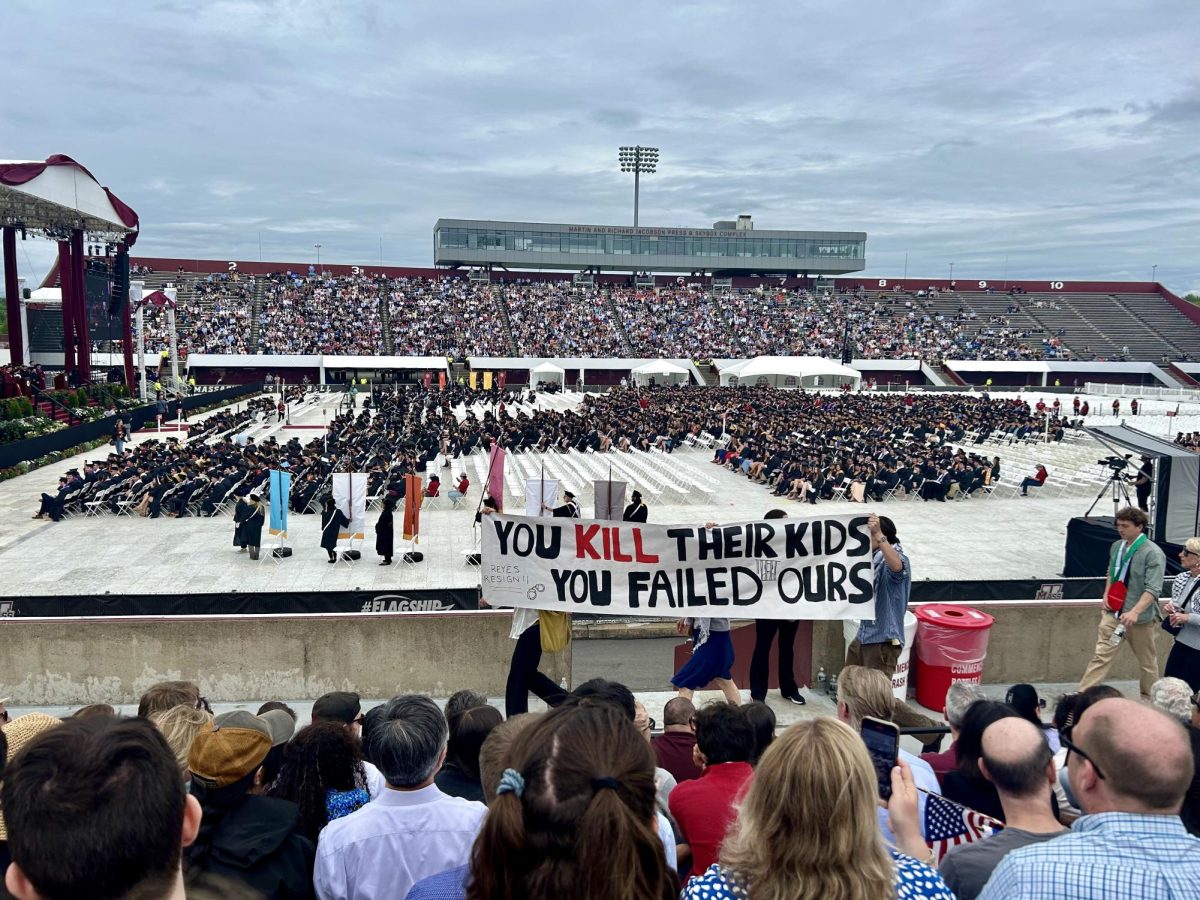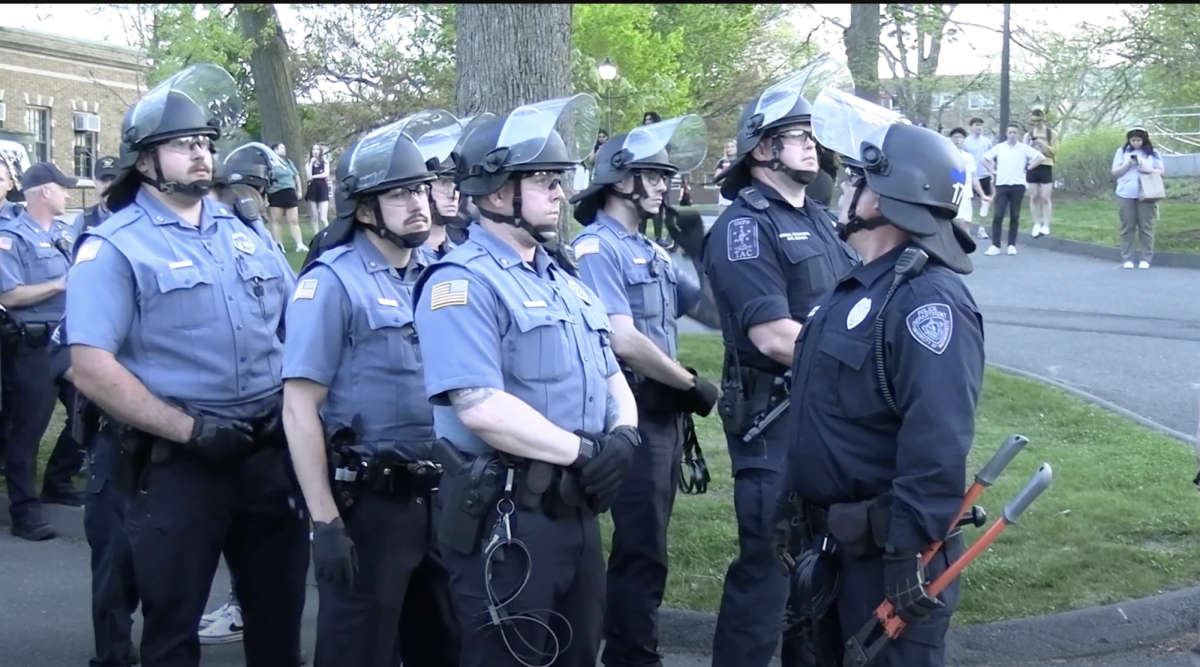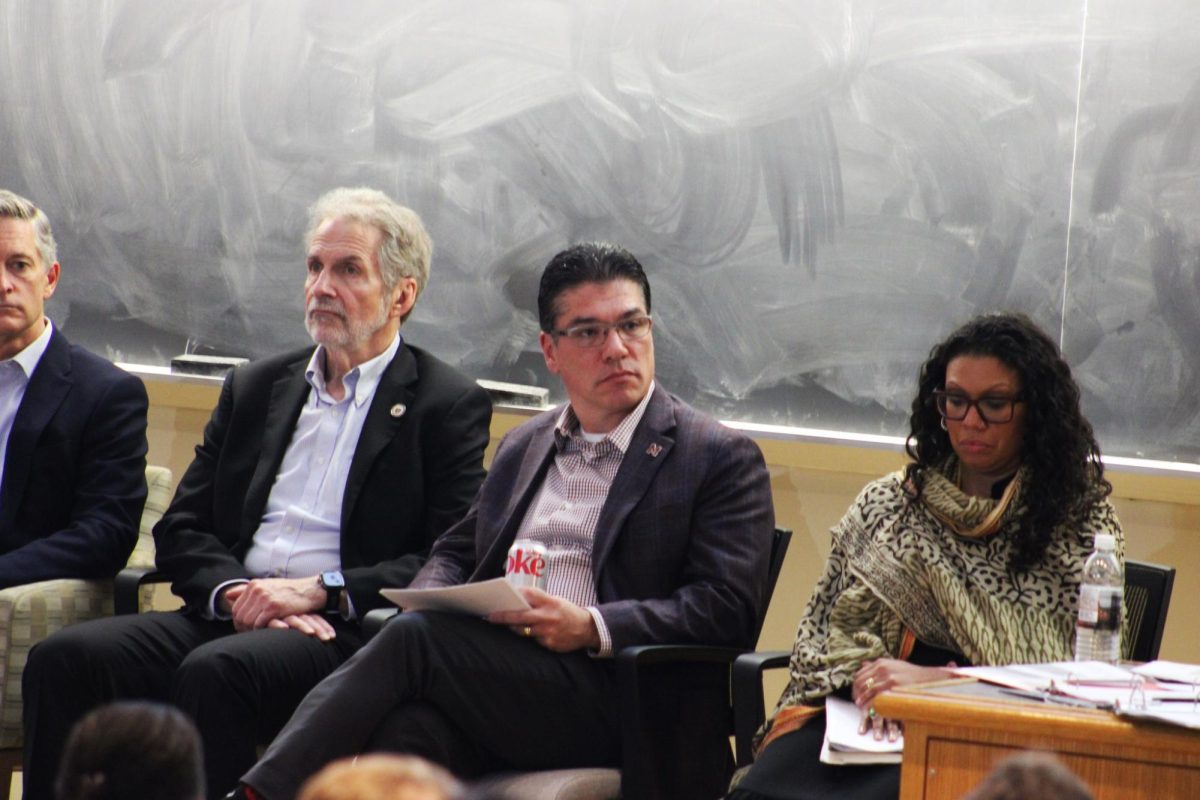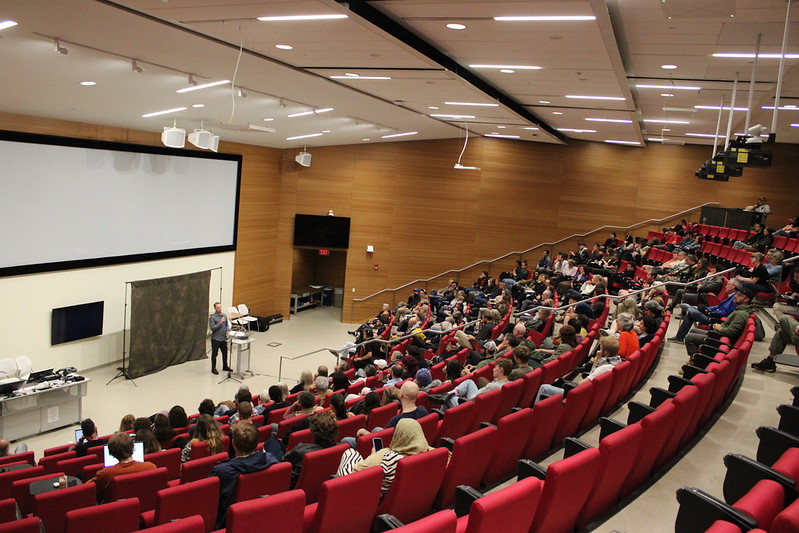A deep orange sunset descended in Amherst two weeks ago, an ominous sign that smoke from massive wildfires had pushed across the country amid weeks of constant burning on the West Coast.
While that sunset and smokey haze may be all the Pioneer Valley sees as a result of the millions of acres of land burning up and down the coast, some students at the University of Massachusetts have been severely affected.
UMass is home to 4,500 out-of-state students encompassing all states, and the West is well-represented in the University’s student population. For students from the opposite coast who have not returned to the Amherst area, the wildfires bring more than an occasional smoggy sky or eerily orange sun.

In the San Francisco Bay Area of California, sophomore computer science major Mathew Han has experienced firsthand the reality of the climate crisis.
“It was most noticeable a week or two ago, when the sky basically turned really orange and you couldn’t see the sun,” Han said. “That was mainly caused by smoke blowing down from Oregon, because Oregon is also on fire as well as California. So, during those days the air quality was really bad.”
Han has not been evacuated, but he is close to the fires — one is just a few minutes from his home.
“I know the eastern area of my town did get an evacuation warning as well. I think that’s mostly it… but I can tell you that my area was definitely affected by the fires,” he said.
Faith Cardoza, a junior journalism major from Gold Hill, Ore., has been living through the massive Oregon fires. The closest fire to Cardoza was 15 to 20 miles away from her home, she said.
Cardoza continues to deal with stress that comes with being close to the fires, such as having to make a packing list in case her family must evacuate. While they are somewhat in the clear now, it took weeks before Cardoza’s family was no longer affected daily by rampant smoke and falling ash.
“It was awful for a couple weeks,” she said. “Today actually looks really nice, the sky is blue and there’s no smoke right now. But I remember when everything was at its height, the smoke was everywhere, you couldn’t even see the sky and the sun was orange. I remember reading that Oregon had the worst air quality in the world.”
The smoke that Cardoza spoke about exacerbated the air quality of Oregon’s largest city, Portland, which was deemed the city with the poorest air quality in the world at one point during the fires. The Environmental Protection Agency labeled Portland’s air quality as “hazardous” on Sept. 14. Close behind it were the major West Coast cities of Seattle, San Francisco and Los Angeles.
In Santa Clara, not far from San Francisco, Shruti Janardhanan, a sophomore computer science major, said the danger of the wildfires has never felt so real.
“Dry lightning strikes hit all over the bay and cause some enormous fires,” she said. “I’ve never seen fires so close to us. I recently moved, but in my hometown, a lot of my close friends were also being evacuated because it came so close to our house — my previous house is in the warning zone.”
As a result of the poor air quality, Janardhanan has been forced to stay indoors as she juggles a full-time job at NASA and a full course load. Her asthma doesn’t make the situation any easier, and before the smoke set over her city, she enjoyed an active, outdoor lifestyle.

“I think we saw blue skies for the first time in weeks last Friday,” Janardhanan said. “That’s when it became safer for people to go out. But before that, if I needed to go shopping or anything, I would go in the night and literally get in the car in the garage and only get out right at the store and go straight home.”
California’s wildfires continue to burn, thousands of people have evacuated and peak fire season does not end until October. The U.S. Department of Agriculture identifies burn season as a six-to-eight-month affair.
Hundreds of miles south of Janardhanan, Nicole Grimaldo, a sophomore economics and political science double major, is living in Los Angeles. She hasn’t been hit directly by the fires, but like many others, she has watched them engulf her surroundings.
“The closest fire to me when it was happening was 20 minutes away,” Grimaldo said. “I live in the valley and those are up in the hills, so then you just feel all the air coming down and all the smoke and there’s ash all over everything. It’s hard to breathe, and you can’t go outside.”
Grimaldo said she’s concerned about the fires but unsurprised at their intensity. Being from Southern California, she’s grown accustomed to natural disasters.
“While all this is happening — all the fires — we just got an earthquake [Sep. 18]. And the epicenter was literally in L.A.,” she said. “It was a 4.5 [magnitude] but it felt massive because it was right here… but growing up in Southern California you’re used to certain natural disasters.”
On top of the stress about firesin the hills, Grimaldo has a full course load and helps out at her father’s business, which was deemed essential but nonetheless impacted by COVID-19. Grimaldo has questioned her priorities as she was consecutively hit with pandemic-related economic concerns, natural disasters and online classes.
Although they haven’t been forced to leave, she said her family is prepared for the fires.
“If they were to come in [to the valley] we’re ready, but as of right now… we just have to stay inside and stay aware,” Grimaldo said.
Further north in Seattle, Wash., Sam Doherty, a sophomore political science major, said the poor air quality makes virtual learning much more difficult. He was stuck inside for about two weeks before Seattle skies finally unleashed heavy rains. The fires occurring in eastern Washington have increased in intensity over the years.
“It’s a reminder that climate change is a really big problem and nothing is really being done to fix it… We’ve seen the fires only get worse and worse every year,” he said.

Doherty is not the only student who expressed concern over the ongoing climate crisis. Each student said this year more than ever, they’ve seen beloved places in their home cities tainted by climate change.
“Recently, places I’ve been to or places I know are catching on fire, and that’s kind of scary because it seems like every summer it’s coming closer to the Bay Area region, [closer to] Northern California,” Han said.
Grimaldo reflected on past burns and said she is worried the increased burning of 2020 will make the outcome worse than before.
“Still, I could pass a fire that happened two years ago, when you’re going through the canyon on the way to the beach, let’s say, that’s where there was a huge fire in Malibu, and you will still see the trees burned, ash all over them, the trees still covered in blackness even if there’s grass growing again,” she said.
The decimated sites resonate in particular with Grimaldo.
“Something you used to think was so beautiful, you now see it covered in ash or completely burned to the ground,” she said.
Like Grimaldo, Janardhanan worries about the ruin the fires will leave behind. She said she is concerned about the consistent lack of urgency that people regard the wildfires and climate change.
“I think the hard part is, people are saying, ‘Oh my god, this is happening like crazy right now.’ Either people are forgetting, or they just didn’t know that this has been happening for the past few years,” she said. “California has always been known to be an earthquake state, but now it’s a fire and earthquake state… The fact that this fire season started a month early — if that doesn’t give enough indication that there are issues happening around us, I don’t know what does.”
Janardhanan said the public’s ignorance likely contributes to the environmental devastation. Cardoza also said she has noticed a form of acceptance in those around her. She is surprised by the sense of normalcy that those who have been impacted retain despite being in the midst of tragedy.
She summed up the last few weeks of her life with a single memory:
“I remember one moment that really stuck out to me, it was at the height of the wildfires and the air quality was horrible. I put on a mask and I went outside to water my plants, even though there was ash falling from the sky. And I thought for a moment just how messed up that is.
“Where it feels like I’m living in a post-apocalyptic world acting all normal, watering my plants, when the world is literally burning around me.”
Ella Adams can be reached at [email protected].




















Ed Cutting • Sep 30, 2020 at 12:52 pm
Look at what is burning in that picture — piles of dead trees and other trash on the forest floor. It then lights the living trees on fire.
The problem is that for the past 50-60 years, we haven’t cleaned out our forests. Mexico and Canada do, and that is why they don’t have the fire problems we do — and they are affected by the same climate issues we are.
We have to clean out our forests. We have to build and maintain access roads and firebreaks.
Kenneth Burton • Sep 30, 2020 at 12:48 pm
Great job Ella! Nice pictures and I love the story’s from the students in the fire communities.